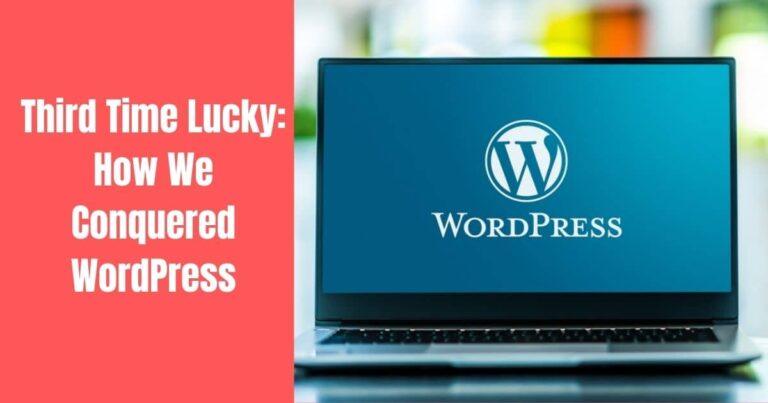We have all task with creating a website. For most of us, this task is daunting, but with WordPress, it does not have to be. WordPress is a popular content management system (CMS) that powers over 40% of all websites on the internet. However, with great power comes great responsibility. Creating a website using WordPress can be challenging, especially for beginners. But do not worry. We have you covered. In this article, we will share Third time lucky how i conquered wordpress and how you can too. WordPress is a free and open-source content management system (CMS) used for creating websites and blogs. It was first released in 2003 and has since grown to become one of the most popular CMS platforms on the internet, powering over 40% of all websites.
WordPress allows users to create and manage their website content through an intuitive interface. Users can choose from a vast array of templates and plugins to customize their website’s appearance and functionality. WordPress is designed to be easy to use, even for users with no coding experience. WordPress is also highly customizable, with thousands of plugins and themes available for users to choose from. This allows users to create a unique website that meets their specific needs and requirements.
Noteworthy features
Some of the significant features of WordPress include its user-friendliness, scalability, customizability, and flexibility. WordPress comes with an intuitive and easy-to-use interface, making it accessible to beginners and non-technical users. It also allows users to customize the design and functionality of their websites using themes and plugins. Additionally, WordPress is highly scalable, meaning that it can handle websites of any size, from small blogs to large enterprise sites. With its open-source nature and extensive community support, WordPress also provides developers with the flexibility and resources to create custom solutions and integrations.
Learning from Our Mistakes
Our first attempt at creating a website using WordPress was a disaster. We spent hours choosing a theme, installing plugins, and customizing our site, only to realize that it looked terrible on mobile devices. We had completely overlooked the importance of having a mobile-friendly website. This mistake taught us the importance of choosing a mobile-responsive theme and testing our site on different devices. Get to know about How Does Technology Affect Art.
Our second attempt was slightly better, but we still made mistakes. We chose a theme that looked great, but it was poorly coded and slowed down our site. We also installed too many plugins, which caused conflicts and made our site unstable. We realized that we had to be more careful when choosing a theme and installing plugins.
We took the lessons we learned from our previous mistakes and applied them to our third attempt. We chose a mobile-responsive theme that was well-coded and optimized for speed. We also carefully selected our plugins, only choosing those that were necessary and well-reviewed.
Choosing the Right Theme
Choosing the right theme is crucial when creating a website using WordPress. A good theme should be mobile-responsive, well-coded, and optimized for speed. There are thousands of free and premium themes available for WordPress, but not all of them are good. We get Third time lucky how i conquered WordPress. When choosing a theme, you should look for the following:
Mobile Responsiveness – A good theme should be mobile-responsive and look great on different devices.
Speed – A fast-loading theme is essential for a good user experience and SEO.
Clean Code – A well-coded theme is essential for site stability and security.
Support – A good theme should come with support from the developer.
Customizability – A good theme should be customizable to fit your needs.
We recommend choosing a theme from a reputable source, such as the official WordPress theme directory or a well-known premium theme provider.
Optimizing Your Site for Speed
Site speed is crucial for user experience and SEO. A slow-loading site can cause visitors to leave before the page has even loaded, resulting in a high bounce rate. It can also negatively affect your search engine rankings. To optimize your site for speed, you should:
Choose a fast-loading theme – As mentioned earlier, choosing a well-coded and optimized theme is essential for site speed.
Optimize your images – large images can slow down your site. You should optimize your images before uploading them to your site.
Minimize HTTP requests – Each file request made by your site takes time to load. You should minimize the number of requests made by your site.
Use caching – Caching can significantly improve your site’s speed. You can use a caching plugin to cache your site’s pages and files.
Optimize your database – Over time, your site’s database can become bloated and slow. You should optimize your database by removing unused data and optimizing its structure.
Choosing the Right Plugins
Plugins are essential for adding functionality to your site, but they can also cause conflicts and slow down your site if you install too many. When choosing plugins, you should: Only install necessary plugins – You should only install plugins that are necessary for your site’s functionality.
